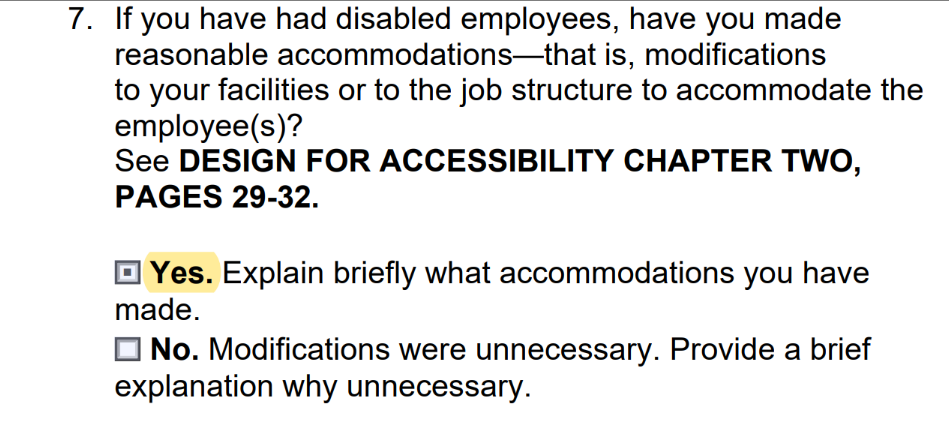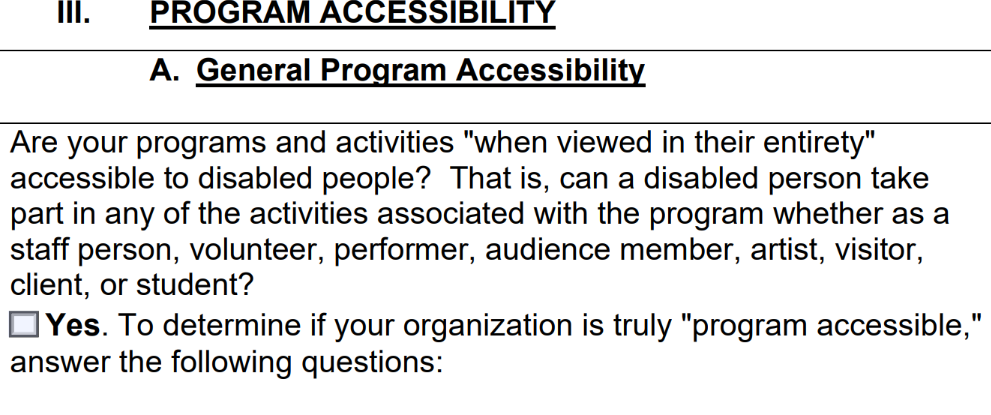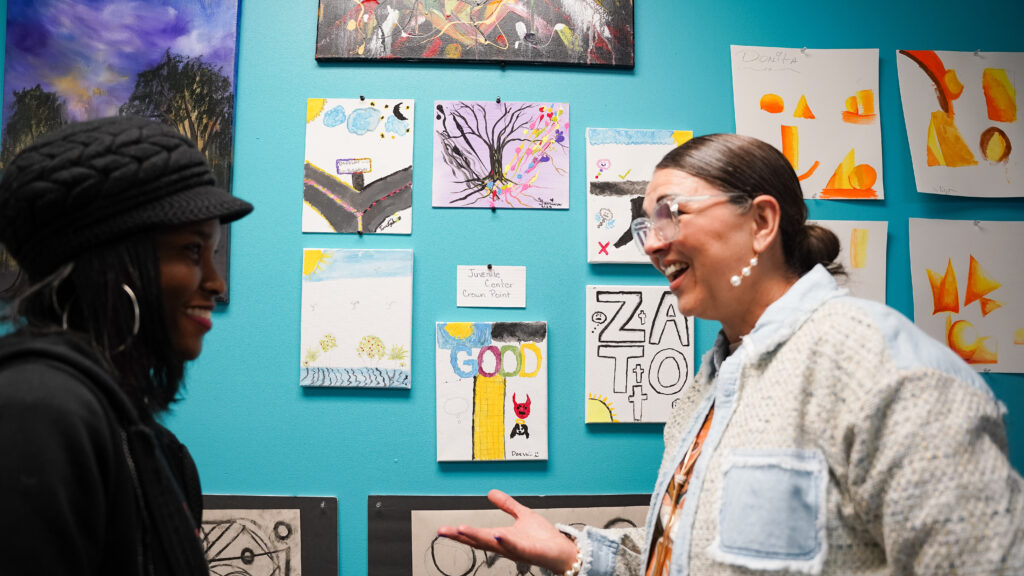This resource is written from Arts Midwest’s perspective to be transparent and to support our grantees and others in this process. This information is not intended as legal advice. Please note that we acknowledge both identity first and person first framing of disability identity. When we use the phrase “disabled people,” we intend to align with the Social Model of Disability understanding that people are disabled by environmental and societal barriers.
Grounding in the 504
Let’s start by answering: what is the 504? Section 504 is one piece of the Rehabilitation Act of 1973, which is part of the Americans with Disabilities Act (ADA). The ADA is a Federal civil rights law that was created to protect people with disabilities from being discriminated against. Section 504 specifically states that disabled people cannot be excluded from participating in any program that receives federal funding.
So, employers, agencies, business, and organizations that receive federal funding must meet 504 standards. This means organizations that receive National Endowment for the Arts (NEA) grants must offer accessible arts programming for people with disabilities.
This applies to us at Arts Midwest, as well as grantee organizations taking part in our NEA funded programming such as Shakespeare in American Communities, NEA Big Read, and the GIG Fund.
Thankfully, the NEA provides a self-evaluation workbook for their grantees to assess if they’re meeting 504 standards. We use this workbook at Arts Midwest, and this is the document we’ll be referencing in this article.
The workbook has sections that cover various aspects of arts organizations. This includes administration, employment, programs, and architectural accessibility. This format makes it easier to thoughtfully consider if and how you’re meeting accessibility needs across your work. The questions are in a yes/no format, and many provide room for explanation.
It’s required that grantees complete this evaluation, or something similar, at least every 3 years. Once finished, you must keep it in an easy-to-access spot in case anyone on staff, in the public, or at the NEA would like to see it.
Developing a Collaborative Approach
Here’s one thing you likely know about accessibility work: it works best with a team! You’ll find from a quick skim of the workbook that one person can’t fill in all perspectives and information needed.
We started by looking at each of the sections to determine where we’d need more input to give the most accurate answer. This doesn’t have to be complex or take all your time—we scheduled 30–60-minute check-ins with people we needed to collaborate with.
Administration and Employment
The first section of the 504 evaluation covers administration and employment. Our accessibility coordinator and HR manager met to walk through those questions together. While doing this, we ran into a question about providing accommodation for staff with disabilities. We felt we could answer yes but found it important to check in with our staff to hear about their accessibility experiences. So, we sent out a short optional survey that gave staff a chance to share their needs and suggestions for a more accessible workplace. The feedback we received helped us measure if we were meeting accessibility needs and find areas for improvement.

Program Accessibility
There’s also a section that prompts you to consider the accessibility of your arts programming. It covers everything from marketing to the accessibility services you offer in your programs. As you review the questions, consider who you should bring in here. Could you walk through these questions with your programs team? Or an access advisory group? Is there a meaningful way you could engage with people in your program communities? For example, building in a brief accessibility check-in with them at your next gathering or through a short survey. This could help to better understand your community’s unique accessibility needs and ideas they have for how you can meet them. Ongoing check-ins keep communication open and recognize that accessibility needs shift over time. This can help create a welcoming environment for your program communities.

Architectural Accessibility
Lastly, the section on architectural accessibility asks you to consider the facility where you host your programs or activities. Arts Midwest largely supports other organizations through programming across the region, so we don’t have a main venue or location where programming takes place. We instead chose to look at the accessibility of our office building and suite. Our accessibility coordinator and office manager met up at the office, brought some measuring tapes, and worked through the questions together. This hands-on process helped us consider barriers that visitors with different disabilities might encounter, and where we have space to advocate for more accessible design.

Pro Tip: Set a Realistic Timeline
Our most recent 504 evaluation took about 1-2 months. It’s helpful to use a project management platform for tracking your progress. You can then create tasks with deadlines and assign yourself and others to them. Include a deadline for when you want to complete the entire evaluation and be ready to share the results with your organization.

Creating Goals
As you work through the evaluation, you’ll start thinking of new goals to help your organization reach the 504 standards. We started tracking those in an Asana project and came back to refine them after finishing the evaluation and discussing with staff.
When you do finish the 504 self-evaluation, no matter what results you find, take a moment to celebrate! Because this is ongoing work, the wrap up might not feel as complete as you want it to. As you start activating your new accessibility goals, plan to build in moments to revisit the goals and check your progress. This will help you realize the strides you’ve made over time and make any needed adjustments.
After we finished the workbook, our accessibility coordinator walked through the findings with staff and invited questions. This helped us all get on the same page with where we meet 504 requirements, where we go above them, and where we need to improve. Making space for this transparency, goal setting, and planning how you’ll check in on the goals over time, is important to the sustainability of this work.
A few staff at Arts Midwest are part of an accessibility working group and we meet periodically to check in on our goals. We assigned a staff person to each goal and spread them out by quarter of the year, according to what was most within reach and what would need more time. When we meet, we talk about how we can support each other in our accessibility goals and take space to come up with new ideas for our commitment to accessibility. Speaking of sustainability—mapping these goals to your organization’s strategic vision and/or DEIA work can help keep accessibility work a priority for all!
Nuances + Thoughts on Process
The 504 is a crucial component of accessibility law and ensuring that disabled people have access to the arts and other public benefits. But guidance on this law can become muddy as there are many ways to interpret some of the requirements. At the end of the day, it’s important to ground in why accessibility is important to your organization, beyond legal requirements, and share that with your communities. At Arts Midwest, accessibility ties into our values of equity, integrity, and learning. We share more on our value of and commitment to accessibility here.
In filling out the 504 workbook, a challenging element for us was having to choose between “yes” or “no” for some of the questions. As this is a legal document that’s intended to measure how you meet standards, this format makes sense. But there were moments when we wanted to answer, “yes and no.” Thankfully many of the questions leave space to add context to your answer. And often, that in between space created conversation for how we could get to a more solid “yes.”
Our biggest takeaway is the importance of having multiple perspectives involved. It’s important to have input from and share this work with other staff, as well as hear from the communities you work with. Arts organizations should especially prioritize feedback from colleagues and community partners with disabilities. That’s the community who has firsthand experience navigating your programs and services and the barriers that may exist within them. Gathering these perspectives can better equip your organization to support your partners and the creative landscape in the area you serve.
Try It Yourself
Ready to dive into your 504 Evaluation? Download a blank workbook below.
Or, click to view Arts Midwest’s completed 504 self-evaluation workbook from 2022.
